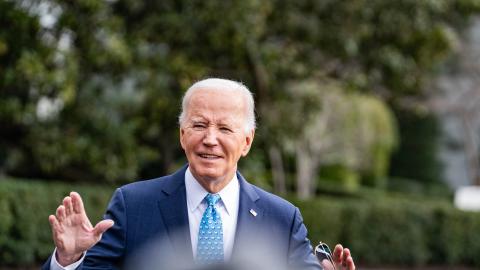President Biden’s national security adviser, Jake Sullivan, wrote in the pages of Foreign Affairs in October 2023: The Middle East “is quieter today than it has been in two decades.”
Biden’s Secretary of State Antony Blinken said Monday: “The situation in the Middle East is the most dangerous since at least 1973.”
These statements bookend Team Biden’s monumentally disastrous approach toward the Middle East.
Four serious errors culminated in Iranian proxies’ weekend attack against American forces in Jordan that resulted in the loss of three US service members.
One, there’s no coherent grand strategy.
The White House would have the American people believe that Russia is the most acute threat to US interests as it tries to subjugate Ukraine.
Yet at the same time, the Biden approach has been to pursue rapprochement with Iran and relax billions in economic sanctions.
Money is fungible, and the regime has used it to invest in its military and send weapons to Russia to use against Ukraine.
The same model of drone that killed three US soldiers in Jordan, the Iranian-made Shahed, has been critical to Moscow’s war effort.
In other words: The Biden Iran strategy is funding the Russian war machine.
Two, Biden refuses to treat China as the primary adversary benefiting from aggression against America and our allies.
The White House has called China the “pacing threat” and recognizes President Xi Jinping seeks to supplant the United States as global leader; yet it’s called on Beijing to help counter Iranian proxy attacks against global shipping.
But China benefits from terrorist attacks against democracies’ free-flowing commerce as well as the United States’ humiliation as it struggles to lead a successful coalition of maritime nations to stop the onslaught of terror.
China has refused to answer distress calls when terrorists attack ships, and the Houthis say Chinese and Russian ships are free to traverse the region unharmed.
Xi’s Communist Party should be treated as it is — the leader of an axis of authoritarian countries: China-Russia-Iran-North Korea.
Three, Biden has a paralyzing aversion to the mere possibility of escalating military responses against the enemy.
The White House has repeatedly said its goal is to avoid a larger regional escalation of violence. But our adversaries perceive that risk aversion as an opportunity to escalate.
Without US escalation or enabling our allies to escalate, the enemy wins.
The country willing to escalate to its advantage is the one that wins.
Four, this White House is unrelenting in its diplomatic outreach to Iran — the source of the region’s instability and enemy of America — rather than the countries that are our allies or at least not our adversaries.
The Biden administration has endless patience for the violence and brutality of the Iran regime, always dedicated to getting a renewed nuclear deal, but no patience for Gulf partners like the Saudis, who are willing to cooperate with the United States against Iran.
Biden ran on a platform of turning Saudi Arabia into a global “pariah.”
His team has convinced itself that in the name of “democracy” and “human rights” it must publicly call out our friends’ crimes.
It’s the equivalent of virtue signaling, but it comes at great cost to America’s strength and influence.
Emboldening the China-Russia-Iran-North Korea axis threatens freedom, self-governance and national sovereignty globally.
The Middle East may be more dangerous now than in the past.
But it isn’t the only region.
Europe remains at risk of intensifying Russian aggression, and democracies in Asia watch the United States stumble again and again while Xi’s China provokes, threatens, coerces and looks for its own opportunities to make moves at our expense.
There is a sense of foreboding that the danger to allies, Americans at home and abroad and the American way of life is only rising.
As long as these four blunders continue, it will.




















